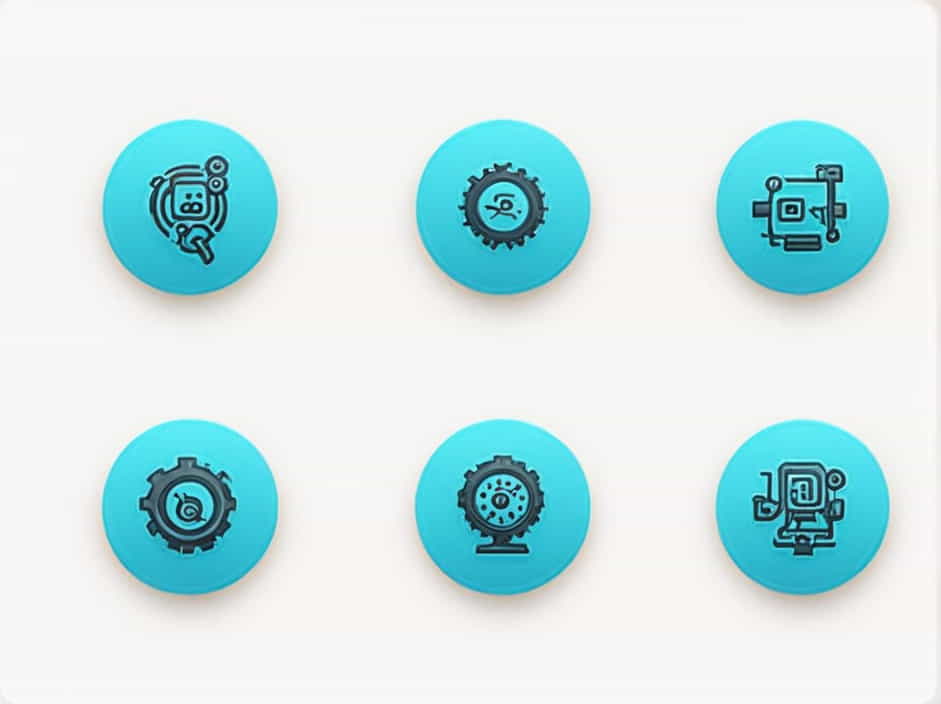Technology has transformed almost every aspect of our lives, especially the workplace. From enhancing communication to improving productivity and streamlining processes, technological advancements have made work environments more efficient and dynamic. This content explores the various ways technology has improved the workplace, highlighting key benefits and relevant examples.
Enhanced Communication and Collaboration
Real-Time Communication Tools
Technology has revolutionized workplace communication. Tools like email, instant messaging apps (such as Slack and Microsoft Teams), and video conferencing platforms (like Zoom and Google Meet) allow employees to connect instantly, regardless of location. This real-time communication reduces misunderstandings and speeds up decision-making processes.
Collaborative Software
Collaboration has become easier with cloud-based tools such as Google Workspace and Microsoft 365. These platforms enable multiple team members to work on documents, spreadsheets, and presentations simultaneously, improving teamwork and ensuring everyone stays on the same page.
Increased Productivity and Efficiency
Automation of Repetitive Tasks
Automation tools have significantly boosted workplace productivity by handling repetitive tasks. For example, customer service chatbots provide instant responses to queries, while automated scheduling tools help manage appointments. This allows employees to focus on more strategic and creative tasks, ultimately increasing overall efficiency.
Project Management Tools
Technology has introduced project management software like Trello, Asana, and Monday.com. These tools help teams organize projects, set deadlines, assign tasks, and monitor progress. As a result, projects are completed on time, and teams can adapt quickly to any changes.
Flexible and Remote Working Opportunities
Rise of Remote Work
Technological advancements have made remote work a viable option for many employees. With reliable internet connections, cloud storage, and virtual communication tools, employees can work from anywhere. This flexibility leads to higher job satisfaction, reduced commuting time, and access to a broader talent pool for employers.
Better Work-Life Balance
Remote working technologies contribute to better work-life balance. Employees can manage their schedules more effectively, leading to increased morale and reduced burnout. Companies that offer flexible working arrangements often see higher retention rates and improved employee well-being.
Improved Data Management and Security
Efficient Data Storage
In the past, businesses relied on physical storage for data, which was often inefficient and prone to damage. Today, cloud storage solutions such as Google Drive, Dropbox, and OneDrive offer secure and scalable data storage options. These platforms make data easily accessible while reducing the risk of data loss.
Advanced Cybersecurity Measures
With the rise of digital data, cybersecurity has become a top priority. Technological advancements in encryption, firewalls, and multi-factor authentication have made it safer for businesses to protect sensitive information. Robust cybersecurity measures reduce the risk of data breaches and ensure compliance with privacy regulations.
Streamlined Recruitment and Onboarding
Digital Recruitment Platforms
Technology has simplified the recruitment process. Platforms like LinkedIn, Indeed, and Glassdoor allow employers to reach a global talent pool. Applicant tracking systems (ATS) help sort resumes and identify qualified candidates efficiently, speeding up the hiring process.
Virtual Onboarding
Onboarding processes have also improved with technology. Virtual training sessions, online orientation materials, and digital handbooks make it easier for new hires to integrate into the company. This ensures a smooth transition and helps new employees become productive members of the team faster.
Enhanced Employee Development and Learning
Online Training Programs
Continuous learning is crucial in the modern workplace. Technology offers access to online training programs, webinars, and e-learning platforms like Coursera, Udemy, and LinkedIn Learning. Employees can upskill at their own pace, ensuring they remain competitive and capable.
Personalized Learning Paths
Artificial intelligence (AI) has enabled personalized learning experiences. AI-powered learning management systems can recommend courses based on an employees role, career goals, and performance, resulting in more effective professional development.
Better Customer Experience and Satisfaction
Improved Customer Support
Technology has transformed customer support through automated systems like chatbots and virtual assistants. These tools provide 24/7 assistance, reducing wait times and improving customer satisfaction. Additionally, customer relationship management (CRM) software like Salesforce helps businesses better understand and meet customer needs.
Data-Driven Insights
Analytics tools provide businesses with valuable insights into customer behavior. This data helps companies tailor their products and services, leading to enhanced customer experiences and stronger customer relationships.
Sustainable and Eco-Friendly Practices
Digital Workspaces
Technology has reduced the need for paper, contributing to eco-friendly work environments. Digital documents, electronic signatures, and virtual meetings minimize the use of physical resources, lowering a companys carbon footprint.
Energy-Efficient Technologies
Many modern workplaces are adopting energy-efficient technologies such as smart lighting, energy-saving appliances, and sustainable data centers. These practices not only reduce environmental impact but also lower operational costs.
Enhanced Workplace Safety
Smart Safety Equipment
In industries like manufacturing and construction, technology has improved workplace safety. Wearable devices can monitor vital signs and detect hazardous conditions, alerting workers and management to potential risks.
Safety Training Simulations
Virtual reality (VR) technology offers immersive safety training experiences. Employees can practice emergency procedures and develop skills in a controlled environment, reducing the likelihood of accidents.
Boosted Innovation and Creativity
Access to Cutting-Edge Tools
Technology provides employees with advanced tools that foster innovation. For instance, graphic designers have access to powerful software like Adobe Creative Cloud, while engineers use simulation tools to test ideas before implementation. These resources enable faster development of new products and services.
Global Collaboration
The ability to collaborate with experts from around the world fuels creativity and innovation. Global teams can bring diverse perspectives, leading to more comprehensive solutions and groundbreaking ideas.
The advancement of technology has undeniably transformed the workplace, bringing numerous benefits that enhance productivity, communication, flexibility, and safety. From remote work opportunities to data-driven insights and eco-friendly practices, technology continues to shape the future of work. As new innovations emerge, businesses that embrace these technological advancements will remain competitive, efficient, and prepared for the challenges of tomorrow.
